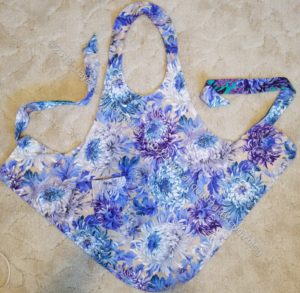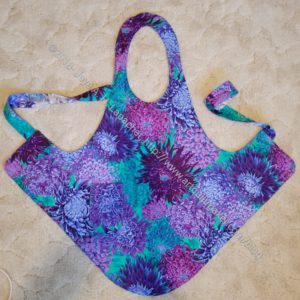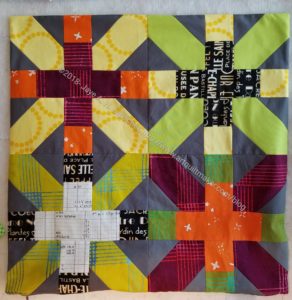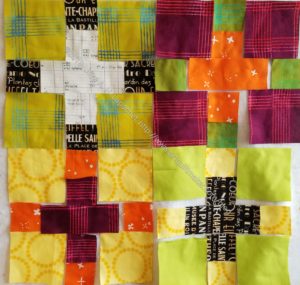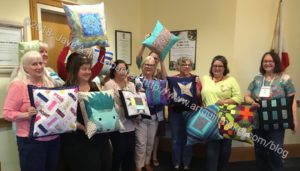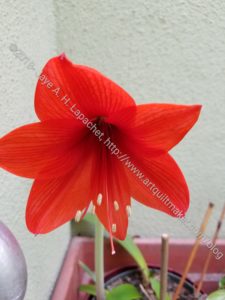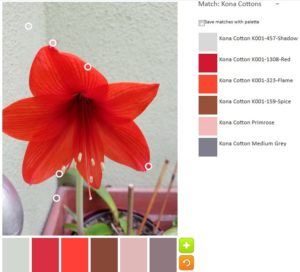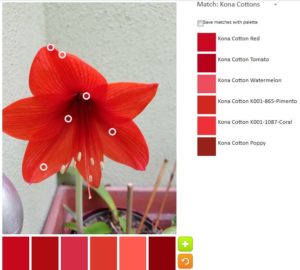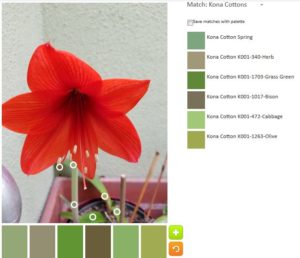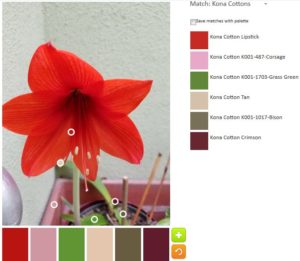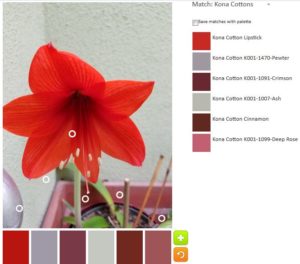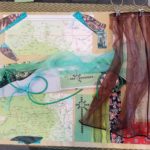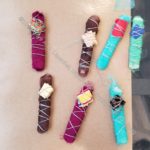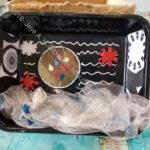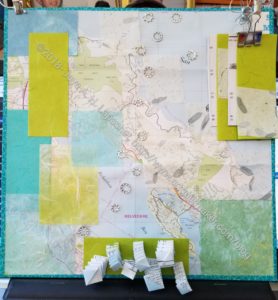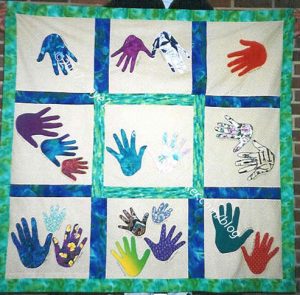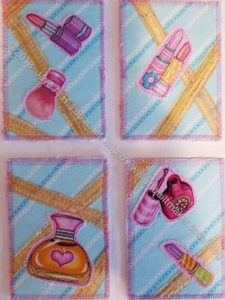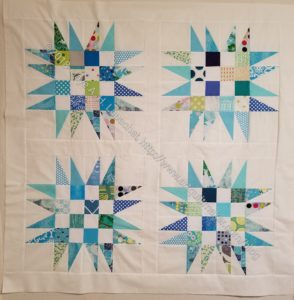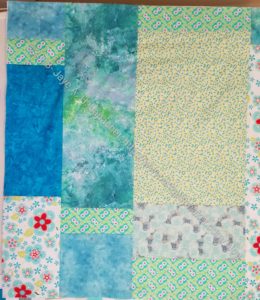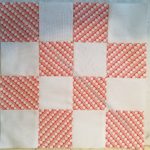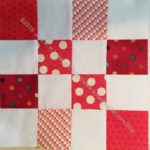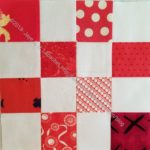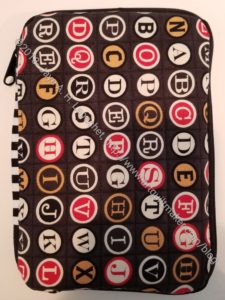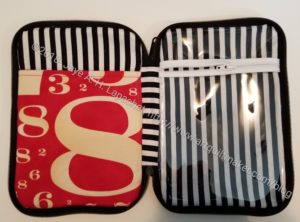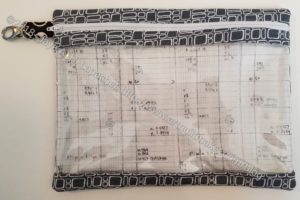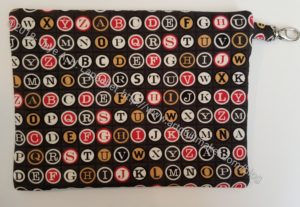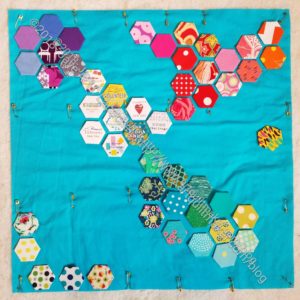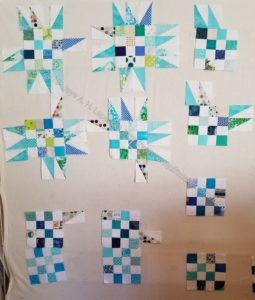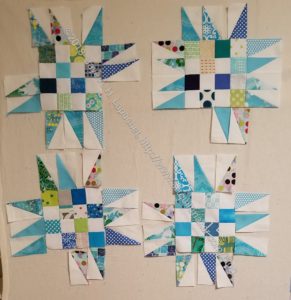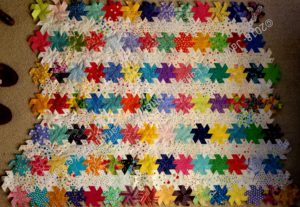 The Fussy Cut Sampler: 48 Quilt Blocks from Your Favorite Fabrics by Nichole Ramirez
The Fussy Cut Sampler: 48 Quilt Blocks from Your Favorite Fabrics by Nichole Ramirez
On first glance, this is a block dictionary. In leafing through the book, I see some classic blocks and others that appear to be modern adaptations of classics. The difference is the fussy cutting and the modern fabrics.
The book has twelve chapters, and starts with acknowledgements (pg.3) and a table of contents (pg.4) and an introduction (pg.5) . The introduction (pg.5) is not included in the table of contents. The introduction starts with an explanation of fussy cutting, “fussy cutting takes that one step further, adding interesting novelty prints, stripes, text, and other designs to your selection process, then determining the right way to cut them to showcase that portion of the fabric” (pg.5). The definition isn’t as clear as it could be, but it is useful and with the illustrations later in the book, even a novice can get the idea.
The following section (pg.5-6) is all about the authors and their approaches. The sidebars at the end are a bit of a non-sequitur but useful “Focal point: determining which portion of the block will be the main attraction, where you want to draw the most attention to ” (pg.6). Dangling participles are scattered throughout the text and are not part of my writing or review. 😉
The Anatomy of a Block is short section (pg.7) showing where background fabrics and fussy cut fabrics are placed. The section doesn’t demand the maker place fabrics in the locations they indicate, but that is the implication and the authors don’t mention moving patches around to get a different look. One thing I have noticed in the modern quiltmaking movement is the way shifting the foreground and the background can make classic blocks look fresh and new. Experiment!
The introduction to using fabrics makes assumptions about all quiltmakers (pg.7), which gets on my nerves, because we are all different, have different tastes and use fabrics in our own ways. It is followed with a useful couple of pages that includes descriptions of framing, directionality, using a design wall (pg.8), seam allowance and fabric repeats (pg.9). There is also a handy illustration defining types of motifs, such as one-way, tossed and geometrics (pg.9), which are standard terms used in fabric design.
Block basics talks about making blocks one at a time (single cut basics). The authors rightly state “since the focus of this book is to isolate motifs, some of the speed cutting and piecing you may be familiar with may not be appropriate” (pg.10). This is key. Sometimes speed cutting is not appropriate to achieve a certain effect.
There is half a page on finishing your quilt, which starts out with a note that Lucky Spool has a free downloadable PDF of quiltmaking basics. Hallelujah! Half a page does not even begin to deal with the intricacies of backing or quilting much less bindings. There is an entire book called Happy Endings, after all!
Most of the tools displayed in the Favorite Tools section (pg.12-13) are regular quiltmaking tools that most of us use. There are a few interesting additions that one doesn’t see in every book such as Flatter and freezer paper.
Chapter 1 is called Background Basics. The introduction to this chapter talks about using light colored or low volume fabrics in backgrounds. Keep in mind that you can successfully use a variety of different colors such as black or bright colors as background as well. I often use colors as backgrounds, as I did in my Punk Rock Quilt and the Wonky Nine Patch quilt. Funnily enough the first block (pg.16) in the book uses a dark background. Branch out and use your color wheel to help boost your confidence.
I find it important to use tools and supplies that I know and trust. “Elisabeth often draws the required 1/4″ seam allowance onto her fabric using an erasable pen” (pg.16). Be well informed before using this type of pen. Reports of the markings coming back as well as damaging the fabric years later where the pen was used are prevalent. I don’t use anything chemical to mark my quilts. My preferences are chalk pencils, such as Sewline pencils, because the marks can be brushed or easily washed away.
There are several different versions of the example block, which I always like to see (pg.16-17) because it shows the reader the possibilities. You do not have have use the same fabric or colors that the authors used! Make blocks and quilts your own! The subsequent blocks cover half square triangles (pg.18-19) in various configurations. There is a sidebar about directionality (pg.19) that I think is very helpful.
Chapter 2 is all about stripes (pg.25-33). The big tip for this chapter: pay attention to directionality of the stripe. This is important as I found in my quilt, Ta Dots & Stripes! The authors suggest directions for the strips, but make sure you like the direction in which the stripes are oriented. Examples of different uses of stripes are included (pg.28-29) as well as creating secondary patterns with stripes (pg.32-33).
This book contains a section on color (pg.35-43). Other books such as Joen Wolfrom’s ColorPlay go into much more detail, however this Ramierez and Woo book discusses color in the context of fussy cutting. The book also includes a section on achieving transparency. This is a good exercise to try before buying the Weeks Ringle and Bill Kerr book on transparency, Transparency Quilt and committing to a full quilt.
I find scale to be just as important as color. The authors discuss it enough to give you an idea of the principles (pg.42-43). You can find more information on Sandy’s podccast on the subject, which is linked from my post.
Chapter 4 recommends Anita Grossman Soloman‘s method of marking your rulers to achieve precision fussy cuts (pg.46-47). I haven’t tried this or heard of this technique before. This section also discusses quarter square triangles and Flying Geese, which are more complicated so the marking directions might prove invaluable. There are fussy cutting rulers out in the market, but the books provides directions for marking your own ruler so you can cut QSTs, HSTs and Flying Geese (pg.46-47). I have a couple of fussy cutting rulers I would probably use over the marking method, mostly because I am lazy and don’t want to mark up my rulers. I also find I can center a fabric I want to cut into a square pretty well without marking. These tips allow you to use the rulers you have with the techniques shown in the book.Still, the section is interesting and it did open my mind to another technique. Each subsequent block is used to teach how to use different fussy cutting techniques to make blocks look different. Featuring motifs in HSTs (pg.50-51), mirroring motifs (pg.52-53), border motifs (pg.54-55) and many others are included.
Chapter 5 discusses working with “complementary fabric prints” (pg.57). I don’t see a glossary where complementary fabric prints are defined for this book, so the reader just has to assume. The reader can infer what the authors mean by reading the descriptions of the exercises in chapter five. Reading through chapter 5 is amazing. The authors have found a number of ways to expand the well known ideas of fussy cutting. Complementary cutting (pg.60-61) is one technique I have never considered.
The authors also talk about restraint such as “building a space in your block construction for your eyes to rest” (pg.67). I think this is very insightful. Makers can use riotous colors and fabrics to good effect, but adding in places for the eyes to rest, however small, can make a better overall design.
I’d like to see the size of the exercise blocks printed on the page with the directions, e.g. Block size: 9″ finished, 9.5″ unfinished. The book does say the blocks finish at 9.5″ each (pg.8). I had to go hunting for the information as I worked through the book. It is easy to forget (as I did) when just reading the book. Perhaps one would not forget as s/he worked through actually making each block? Nonetheless, putting the size in a more prominent location wouldn’t take up much space.
Most of the blocks seem to be based on a 3×3 grid (9 patch – See Jinny Beyer’s The Quilter’s Album of Patchwork Patterns for more information on the grids and structure of blocks), but I don’t think they all are. In glancing through the directions I don’t see any unusual measurements to cut.
This work also gives a lot of incidental information about fabric design, which I alluded to above. Chapter 7’s description (pg.77) talks about tossed prints, for example. This chapter includes a small, yet helpful, diagram on grain (pg.83). This is something I would consider copying to a notebook or my ‘tips’ bulletin board.
Each of the blocks, through two chapters, includes two versions of the same block. Each author uses the same techniques to make her own version. I always appreciate this effort in books and magazines as it immediately shows there are more than one way to color a block (or quilt).
There is a lot you can do with this book. There are so many techniquesthat I had a hard time absorbing them all. Obviously, this book will teach you almost everything you needed or wanted to know about fussy cutting. If you want practice making blocks, there are 48 on which to practice, so a double bonus: fussy cutting and block making. This is a great book suggesting new ways to use your novelty fabrics.
If you want to improve your skills, this would be a great book to buy.
View all my reviews, including non-quiltmaking reviews.

